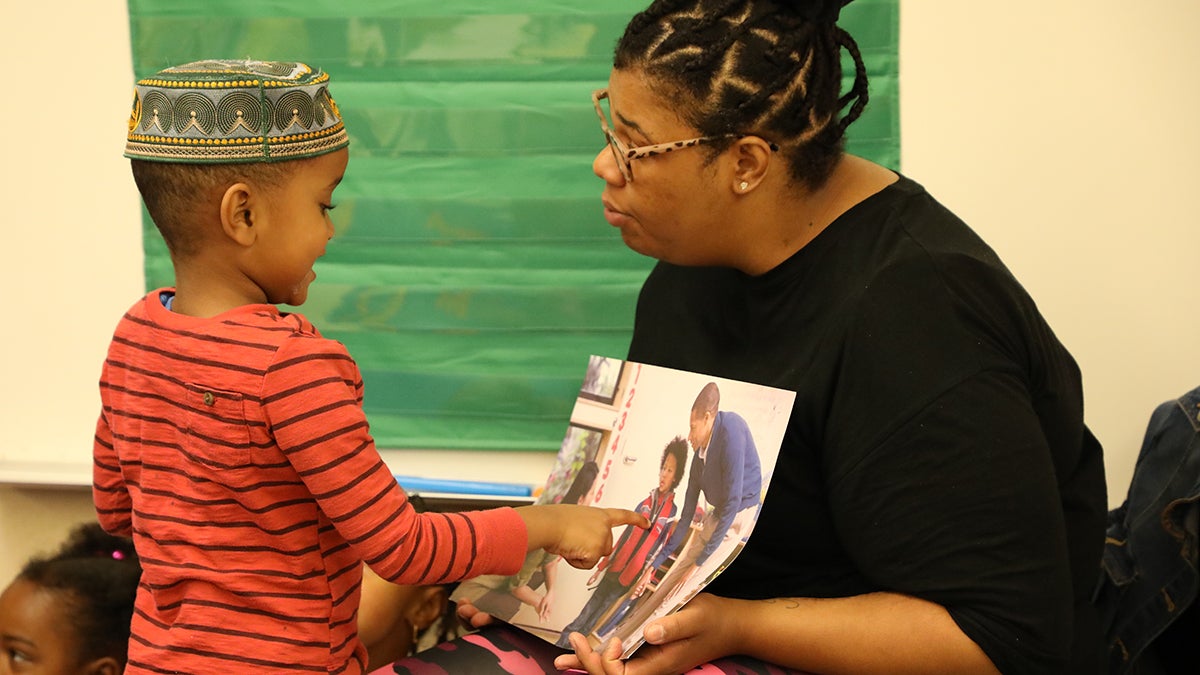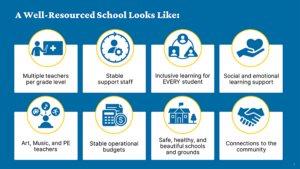Well-Resourced Schools at Seattle Public Schools
Looking Toward a System of Well-Resourced Schools
Seattle Public Schools (SPS) is building a system of well-resourced schools. This effort aims to ensure every student is prepared for college, career, and life.
What is a well-resourced school?
Our goal is that every school in our district will uphold our community’s values and offer a comprehensive education to prepare students for lifelong success. A well-resourced school is a central hub for students, families, staff, and community.
A Well-Resourced School:
- includes access to high-quality educators and modern classroom resources, textbooks, and technology
- offers curriculum that is inclusive and representative of diverse cultures, backgrounds, and abilities
- prioritizes safety through proactive security measures
- fosters a supportive environment where students feel valued and supported socially and emotionally
Why: SPS believes in the transformative power of public education and the collaborative investment needed to shape schools that reflect our city and communities.
How: We prioritize innovative, high-quality schools staffed by exceptional educators. Our aim is to ensure every student receives a world-class education tailored to their academic, social, and emotional needs.
What: By fostering a culture of equity, inclusivity, and safety, we provide access to modern resources and diverse curriculum, empowering students for lifelong success and fulfillment in post-secondary education and the workforce.
Because SPS operates more than 70 schools serving our youngest students, the recommendation of transition to a system of well-resourced schools focuses on the schools that serve students in preschool through 5th grade first.
Among our 104 school buildings, Seattle Public Schools currently has 73 schools that serve our students in preschool through 5th grade. Twenty-nine (29) of our elementary schools currently serve less than 300 students.
Our main goal is to make sure students get a great education, even when we face challenges.

How did we get here?
We have reached a crossroads for our district.
Like all school districts, SPS is adapting to shifting community demographics, which affects how many students are enrolled in our schools. We also know that student and community needs change over time. Additionally, persistent gaps in state basic education funding have impacted SPS and other districts across the state.
SPS is operating several school buildings that are under-enrolled, which often occurs in our that serve our youngest students. Low enrollment can lead to fewer staffing resources, more staffing adjustments, and more frequent changes due to budget.
SPS operates more than 70 schools serving students in preschool through 5th grade.
If we maintain the current number of school buildings that serve our youngest students, SPS will need to reduce services.
This could mean:
- having more students per teacher
- reducing core school staff
- reducing or eliminating preschool
- reducing central office staff that directly support school operations
- curriculum adoption reductions
Depending on how much we cut, we might still have to close some school buildings.
The alternative being presented to the Seattle School Board is that our district takes on the challenging but rewarding work to develop a system of well-resourced schools.
This new model would mean SPS would have fewer school buildings that serve students in preschool through 5th grade, but the building capacity would be better aligned with student enrollment.
Our aim is for all our schools to reflect community values and provide a complete education that prepares students for success throughout their lives.
What are next steps?
Dr. Jones will bring the preliminary recommendations to the Seattle School Board in June 2024.
We hope you are able to join us for one of the upcoming informational community meetings. To ensure SPS families have the greatest opportunity to take part, each meeting will present the same information but be held in locations around our district.
We will continue to work to prioritize inclusive and high-quality education for our students. We are approaching these decisions in a thoughtful way to ensure we minimize negative impacts on student learning.
Well-Resourced Schools and Budget Presentations to the School Board
Timeline
- The School Board heard Superintendent Jones’ recommended strategies as an introductory item during the Nov. 15 meeting. Read the presentation overview and watch the meeting recording.
- The resolution went back to the full board for consideration at the Dec. 13 Regular Board Meeting.
- The School Board held a work session on Jan. 17, 2024, to hear about updates on budget development.
- The School Board met on March 20, to hear a legislative update.
- The School Board participated in a Budget Work Session on April 3.
- The superintendent will present a well-resourced schools update to the School Board in May 2024.
- The School Board is scheduled to review the final budget recommendation in June and is scheduled to vote on a final budget in July.
What is the community vision?
Past and Upcoming Community Engagement
Superintendent Jones launched a community-wide effort to reimagine a system of well-resourced Schools that is safe, equitable, and offers students and families the programs, services and resources they need to succeed and thrive in the neighborhoods where they live.
The community vision will provide a foundation to frame challenges and opportunities for SPS in the coming years. It will help guide future strategic planning and resource allocation decisions, including funding for Well-Resourced Schools, SPS Funding Our Future planning, renewal of the Seattle Excellence Strategic Plan, and the BEX VI Levy.
Frequently asked questions
Answers to community questions and how to submit your questions or feedback.

